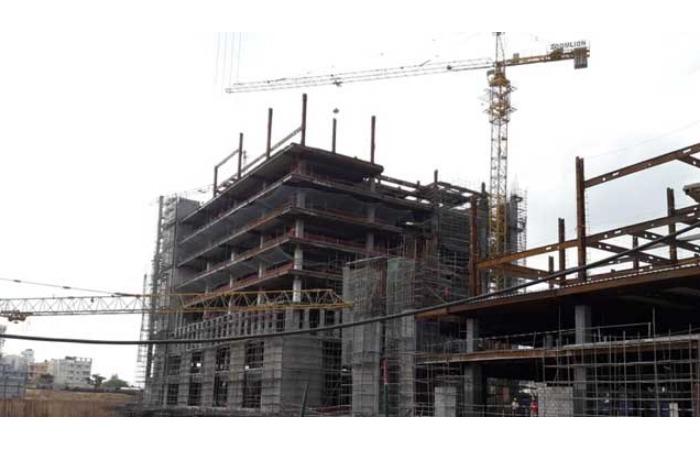
Tower Cranes in Tough Times
Market scenario
In 2019, the market size of tower cranes in India was around 730 units. However, due to COVID-19 pandemic this year, several ongoing projects in various sectors such as infrastructural and industrial have been stopped suddenly, due to which, tower crane market in India is expected to face a de-growth in 2020.
In India, the demand for tower cranes is majorly generated by real estate, infrastructural projects, power plants, industrial projects for lifting and carrying of heavy materials to a certain height and for maintenance of heavy equipment used in several industries.
A major portion of the demand for tower cranes is being generated by the projects in real estate sector in India. Therefore, with the slowdown in progress in real estate sector projects this year, the tower crane market is also facing a slowdown. However, apart from the real estate projects, several other sectors such as power plant, industrial, railway projects, construction of bridges and dam projects and marine construction projects are continuously generating demand for tower cranes in India.
In power plants, tower crane is used for lifting and handling of heavy electric cables and is also used for the construction of extremely tall chimneys. In industrial sector, tower crane is often used for maintenance of heavy weight machinery, material handling purposes where heavy materials need to be lifted from one location to another within the plant. In the projects of railway, construction of bridges and marine towers, cranes are used for loading and unloading of heavy materials and for lifting of heavy materials into a considerable height.
Post-COVID trend
COVID-19 has put a full stop on several ongoing and upcoming projects in various sectors where tower cranes are majorly used. Due to this, the demand for tower cranes has faced a de-growth in the present year. However, the market is expected to recover within next two to three years and is expected to grow at a moderate pace. Additionally, the demand for tower cranes is anticipated to emanate from various infrastructural projects, manufacturing sectors involved in manufacturing of heavy products such as generators, steel, etc, real estate sector and from several utility sectors. Moreover, it is expected that the demand for tower crane will be generated from government sector as government will focus on resuming ongoing projects and will launch several new infrastructure projects towards infrastructure development in the country.
Growth outlook
The growth of tower crane market in India is expected to be driven by several factors in near future. Government initiative towards the development of 100 smart cities, development of urban infrastructure including metro rail projects, ports, industrial corridors and freight corridors are some of the leading growth drivers for tower crane market in India. Increase in public private partnerships within the country is encouraging significant private sector investments in infrastructural development, which in turn boosting the demand for tower cranes in India. Also, increase in constructional activities and growth of construction industry due to easy availability of financing schemes is fuelling the growth of tower crane market. Moreover, increase in rental equipment business in the country is also driving the growth of tower crane market as several rental tower cranes are being used for completion of small projects of short duration, as purchasing of tower cranes for such small projects need huge investments.
Author box
Karan Chechi is the Research Director at TechSci Research.


 +91-22-24193000
+91-22-24193000 Subscriber@ASAPPinfoGlobal.com
Subscriber@ASAPPinfoGlobal.com